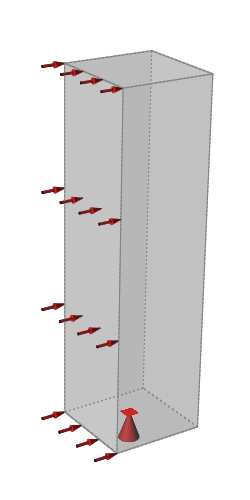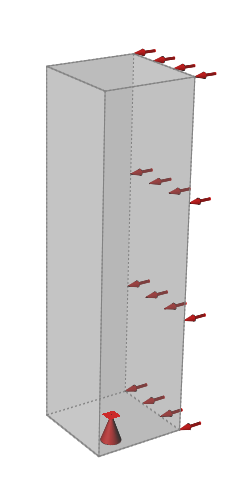Load Cases
A load case is a set of loads and supports, displacements, accelerations, and temperatures that act on a model at one time.
Before running an analysis or optimization, you need to define at least one load case for your model. You may also want to create multiple load cases with different loads and displacements to understand how this impacts the results of an analysis or optimization.
A model can experience different load cases at different times; for example, consider a building that is subjected to gusts of wind. At one moment the wind pressure on the side of a building may come from the east, and the next moment it may change and come from the west. If you want to create a building that will resist wind blowing from either east or west, you would create two different load cases: the first containing a pressure from the east direction, and the second with a pressure from the west direction. This allows you to generate one shape that is optimized to handle any number of different load cases.
 Figure 1. Load Case 1: West Wind and Ground Support
Figure 1. Load Case 1: West Wind and Ground Support Figure 2. Load Case 2: East Wind and Ground Support
Figure 2. Load Case 2: East Wind and Ground Support